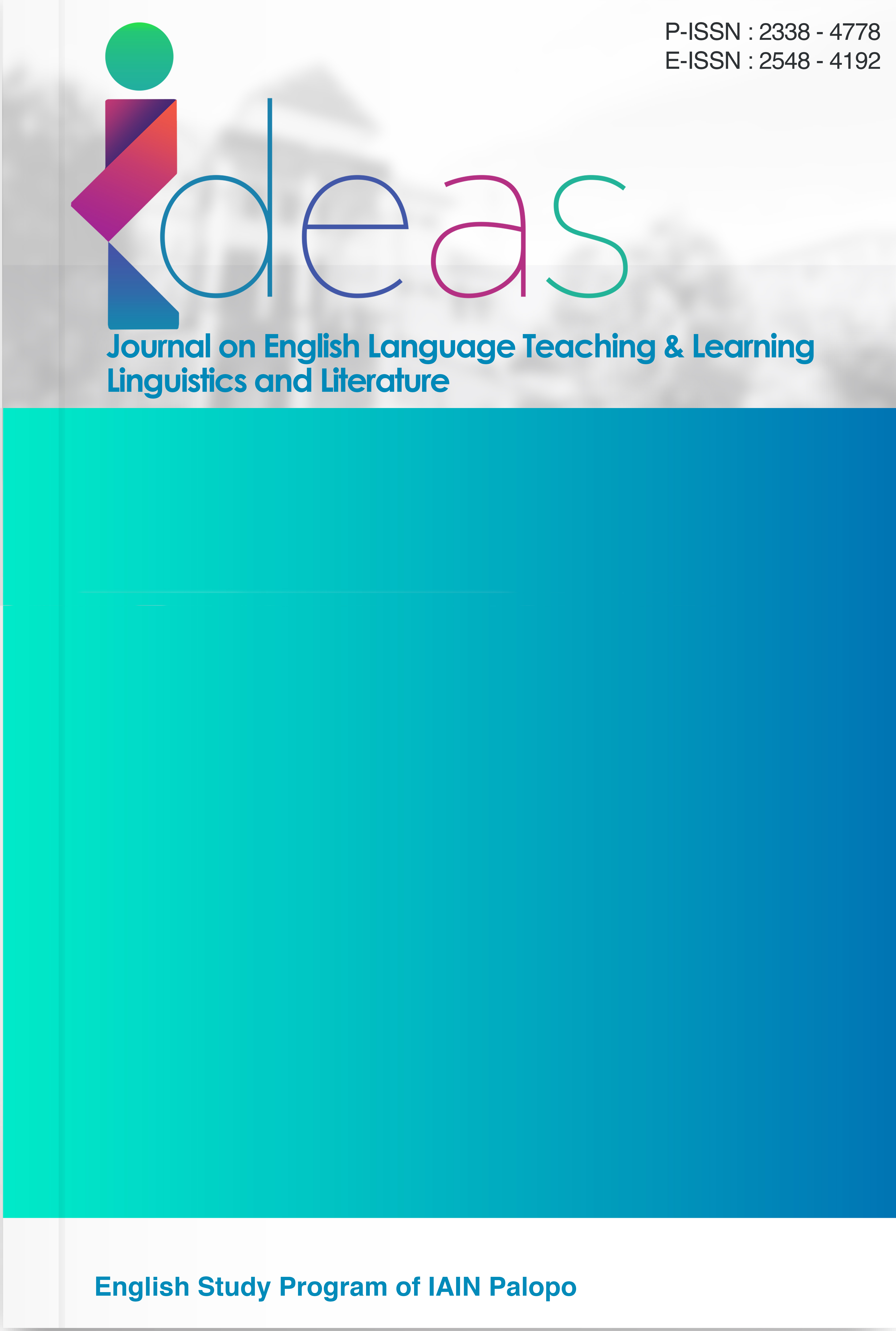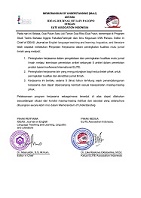The Influence of Using Animated Videos to Improve Students Vocabulary and Pronunciation in English Language Learning
DOI:
https://doi.org/10.24256/ideas.v13i2.7109Keywords:
animated video, vocabulary, pronunciation, English language learning, elementary school students, Wilcoxon Signed Ranks TestAbstract
This study aims to determine the effect of animated videos in improving students' vocabulary and pronunciation in English language learning. The subjects in this study were grade fifth students totaling 36 elementary school students who followed the learning process with animated video media as an intervention. The method used was a quasi-experiment with pre-test and post-test design. The data were analyzed using the Wilcoxon Signed Ranks Test. The results showed a significant increase in students' vocabulary and pronunciation skills after the intervention. The statistical test showed a significant difference between the pre-test and post-test results of students' vocabulary and pronunciation skills. These findings reinforce the theory that audiovisual media, particularly animated videos, can help improve students' memory, context understanding, and learning motivation. Therefore, the use of animated videos as learning media is highly recommended to improve students' English proficiency in an effective and fun way.
Keywords: animated video, vocabulary, pronunciation, English language learning, elementary school students
References
Arikunto, S. (2013). Dasar-dasar evaluasi pendidikan (Edisi Revisi). Jakarta: Bumi Aksara.
Aridha, A. Y. (2018). The use of animation video in improving the vocabulary of the second-grade students at MTsN Balang-Balang Gowa. Proceedings of the 65th TEFLIN International Conference, Universitas Negeri Makassar.
Arsyad, A. (2011). Media pembelajaran (Edisi Revisi). Jakarta: Rajawali Pers.
Astiyandha, T. I., & Muchlisoh, L. (2019). Improving students’ vocabulary through blindfold games. Lingua, 15(2), 115–124.
Annisa, N., Syam, A. T., & Masruddin, M. (2022). Teaching vocabulary through the round robin brainstorming technique. English Education Journal, 13(1), 741-750.
Campbell, D. T., & Stanley, J. C. (1963). Experimental and quasi-experimental designs for research. Chicago, IL: Rand McNally.
Celce-Murcia, M., Brinton, D. M., & Goodwin, J. M. (1996). Teaching pronunciation: A reference for teachers of English to speakers of other languages. Cambridge University Press.
Harmer, J. (2001). The practice of English language teaching (3rd ed.). Harlow: Longman.
Hwang, I., Tam, M., Lam, S. L., & Lam, P. (2012). Review of the use of animation as a supplementary learning material for physiology content in four academic years. Electronic Journal of e-Learning, 10(4), 368–377.
Kabooha, R., & Elyas, T. (2018). The effects of YouTube in multimedia instruction for vocabulary learning: Perceptions of EFL students and teachers. English Language Teaching, 11(2), 72–81. https://doi.org/10.5539/elt.v11n2p72
Mayer, R. E. (2005). Cognitive theory of multimedia learning. In R. E. Mayer (Ed.), The Cambridge handbook of multimedia learning (pp. 31–48). Cambridge University Press.
Mayer, R. E. (2009). Multimedia learning (2nd ed.). Cambridge University Press.
Masruddin, M., & Munawir, A. (2021). the Efficacy of the Treasure Hunt Game With Luwu Local Culture Based on Teaching English Vocabulary and Introducing Cultural Heritages of Luwu at SMPIT Al Hafidz Kota Palopo. Kongres Internasional Masyarakat Linguistik Indonesia, 204-208.
Nation, I. S. P. (2001). Learning vocabulary in another language. Cambridge University Press.
Richards, J. C., & Rodgers, T. S. (2001). Approaches and methods in language teaching (2nd ed.). Cambridge: Cambridge University Press.
Silfia, L. (2018). Developing of teaching materials using animation media to learn English vocabulary for early childhood. Jurnal Pendidikan Anak Usia Dini, 1(1), 9–16.
Wright, A., Betteridge, D., & Buckby, M. (1984). Games for language learning (2nd ed.). Cambridge: Cambridge University Press
Yusuf, M. M., Amin, M., & Nugrahaningsih, N. (2017). Developing an instructional media-based animation video on enzyme and metabolism material in senior high school. JPBI (Jurnal Pendidikan Biologi Indonesia), 3(3), 254–257. https://doi.org/10.22219/jpbi.v3i3.4744
Downloads
Published
Issue
Section
Citation Check
License
Copyright (c) 2025 Revia Febriyanita. M, Nuzulul Isna

This work is licensed under a Creative Commons Attribution-ShareAlike 4.0 International License.
Authors retain copyright and grant the journal right of first publication with the work simultaneously licensed under an Attribution-ShareAlike 4.0 International (CC BY-SA 4.0) that allows others to share the work with an acknowledgement of the work's authorship and initial publication in this journal.
Authors are able to enter into separate, additional contractual arrangements for the non-exclusive distribution of the journal's published version of the work (e.g., post it to an institutional repository or publish it in a book), with an acknowledgement of its initial publication in this journal.
Authors are permitted and encouraged to post their work online (e.g., in institutional repositories or on their website) prior to and during the submission process, as it can lead to productive exchanges, as well as earlier and greater citation of published work (See the Effect of Open Access)




